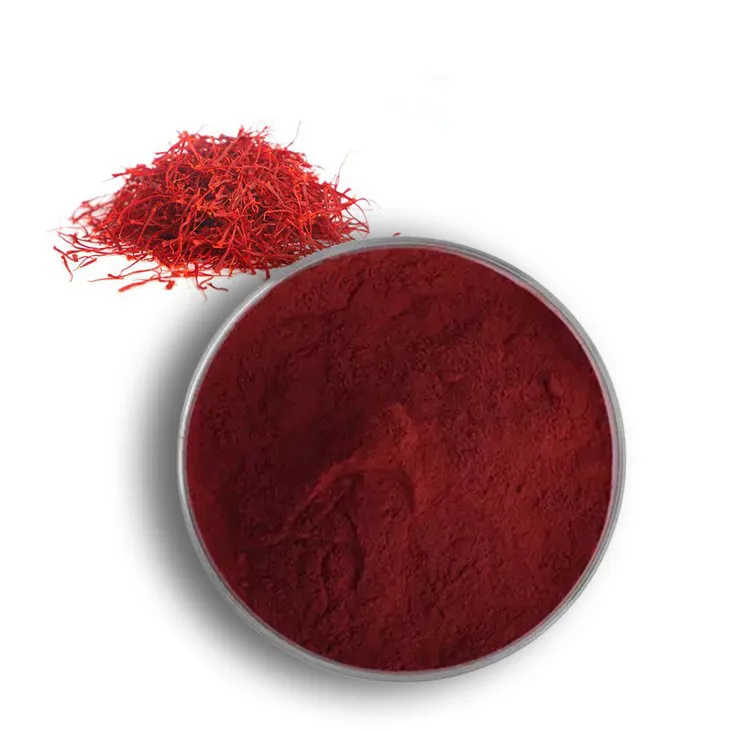- 0086-571-85302990
- sales@greenskybio.com
The Science Behind Microwave Technology: Fundamentals for Plant Extraction
2024-07-17
1. Introduction
Plant extraction is a crucial process in various industries, including pharmaceuticals, food, and cosmetics. Traditional extraction methods have been used for a long time, but microwave technology has emerged as a promising alternative. Microwave - assisted extraction (MAE) offers several advantages over traditional methods, such as shorter extraction times, higher yields, and potentially better quality of extracts. Understanding the science behind microwave technology in plant extraction is essential for its optimal application.
2. The Electromagnetic Nature of Microwaves
Microwaves are a form of electromagnetic radiation with frequencies ranging from 300 MHz to 300 GHz. They lie between radio waves and infrared radiation on the electromagnetic spectrum. Microwaves are generated by a magnetron in a microwave oven or other microwave - generating devices. The electromagnetic nature of microwaves is characterized by oscillating electric and magnetic fields that are perpendicular to each other and to the direction of propagation.
When microwaves interact with matter, such as plant materials, they cause the molecules in the material to oscillate. In the case of plant cells, water molecules are of particular importance. Water molecules are polar, meaning they have a positive and a negative end. The oscillating electric field of the microwaves causes the water molecules to rotate and align with the field. This rotation and alignment result in internal heating within the plant cells.
3. Microwave Penetration into Plant Cells
The ability of microwaves to penetrate plant cells is a key factor in microwave - assisted extraction. Microwaves can penetrate several centimeters into plant materials, depending on the frequency and the nature of the material. The penetration depth is related to the attenuation of the microwave energy as it travels through the material.
When microwaves enter plant cells, they interact with the various components present. As mentioned earlier, water molecules are the primary target. However, other polar and ionic components in the plant cells can also interact with the microwaves. This interaction leads to the disruption of cell membranes and the release of intracellular components. For example, the cell walls of plant cells can be weakened, allowing the extraction solvents to more easily access the intracellular compounds.
4. Role of Microwave Frequency
Microwave frequency plays a crucial role in plant extraction. Different frequencies can have different effects on the extraction process. Lower frequencies (e.g., 915 MHz) tend to penetrate deeper into the plant material but may result in less selective heating. Higher frequencies (e.g., 2450 MHz), on the other hand, may provide more selective heating but have a shallower penetration depth.
In some cases, a combination of frequencies may be used to optimize the extraction process. For example, a two - step extraction process could involve an initial treatment at a lower frequency to penetrate deep into the plant material and a subsequent treatment at a higher frequency to target specific components more selectively.
5. Role of Microwave Power
Microwave power is another important parameter in microwave - assisted extraction. The power level determines the rate of heating within the plant material. Higher power levels can lead to faster heating, but they also increase the risk of overheating and degradation of the target compounds.
It is essential to find the optimal power level for each extraction process. This may require some experimentation, taking into account factors such as the type of plant material, the extraction solvent, and the target compounds. A balance needs to be struck between achieving efficient extraction and maintaining the quality of the extracts.
6. Comparison with Traditional Extraction Methods
6.1 Efficiency
Microwave - assisted extraction is generally more efficient than traditional extraction methods. Traditional methods, such as Soxhlet extraction, can take hours or even days to complete. In contrast, MAE can often be completed in minutes to a few hours. The rapid heating and mass transfer processes in MAE contribute to its high efficiency.
6.2 Quality of Extracts
The quality of extracts obtained using microwave technology can be different from those obtained by traditional methods. In some cases, MAE can lead to extracts with higher levels of bioactive compounds. This may be due to the more gentle extraction conditions in MAE, which can prevent the degradation of sensitive compounds. However, in some situations, traditional methods may still be preferred for certain types of extracts, depending on the specific requirements of the end - product.
6.3 Environmental Impact
From an environmental perspective, microwave - assisted extraction has some advantages. It generally requires less solvent compared to traditional methods, which reduces the amount of waste generated. Additionally, the shorter extraction times can lead to lower energy consumption, although the energy consumption of the microwave - generating device itself needs to be considered.
7. Conclusion
Microwave technology offers a scientifically - based alternative to traditional plant extraction methods. Understanding the fundamentals of microwave - assisted extraction, such as the electromagnetic nature of microwaves, their penetration into plant cells, and the roles of frequency and power, is crucial for optimizing the extraction process. While MAE has many advantages over traditional methods in terms of efficiency, quality of extracts, and environmental impact, it is not a one - size - fits - all solution. Each extraction process needs to be carefully designed and optimized based on the specific characteristics of the plant material, the target compounds, and the end - use requirements. Continued research in this area will further enhance the understanding and application of microwave technology in plant extraction.
FAQ:
1. What is the electromagnetic nature of microwaves in plant extraction?
Microwaves are a form of electromagnetic radiation. In plant extraction, they have the ability to interact with the polar molecules present in plant cells. These microwaves cause the polar molecules, such as water, to oscillate rapidly. This oscillation generates heat due to the interaction of the electromagnetic field with the molecules. The electromagnetic nature of microwaves thus allows for a direct and efficient way to heat the interior of plant cells, which is crucial for the extraction process.
2. How do microwaves penetrate plant cells for internal heating?
Microwaves can penetrate plant cells because they are not significantly absorbed by the cell walls at first. The microwaves pass through the outer layers of the plant material and interact with the polar components inside the cells. As mentioned before, the interaction causes the polar molecules to vibrate. This vibration leads to frictional forces within the cell, which in turn generates heat. So, microwaves are able to reach deep into the plant cells and cause internal heating without relying solely on heat conduction from the outside.
3. What role does microwave frequency play in optimizing extraction yields?
The frequency of microwaves is important in optimizing extraction yields. Different frequencies can have different effects on the plant materials and the extraction process. A specific frequency may be more effective in exciting the target molecules in the plant cells for extraction. If the frequency is properly selected, it can enhance the interaction between the microwaves and the plant components, leading to a more efficient release of the desired substances. For example, a frequency that better matches the resonant frequency of certain molecules in the plant may result in a higher extraction yield.
4. How does microwave power affect plant extraction?
Microwave power has a significant impact on plant extraction. Higher power levels can generally lead to faster heating of the plant cells. However, if the power is too high, it may cause overheating and degradation of the active compounds in the plants. On the other hand, if the power is too low, the extraction process may be too slow. The optimal microwave power needs to be determined based on the type of plant, the target compounds, and the extraction conditions. By adjusting the power, one can control the rate of internal heating in the plant cells and thus optimize the extraction process to obtain the maximum yield of the desired substances.
5. How does microwave - based plant extraction compare to traditional extraction methods in terms of efficiency?
Microwave - based plant extraction is often more efficient than traditional extraction methods. Traditional methods, such as Soxhlet extraction, may require long extraction times, often several hours to days. In contrast, microwave extraction can be completed in a much shorter time, sometimes within minutes to a few hours. This is because microwaves can directly heat the interior of plant cells, accelerating the release of target compounds. Additionally, microwave extraction can be more selective in some cases, allowing for a more targeted extraction of the desired substances compared to traditional methods.
6. How does the quality of extracts differ between microwave - based and traditional extraction methods?
The quality of extracts can vary between microwave - based and traditional extraction methods. In microwave extraction, the shorter extraction times and more targeted heating can potentially lead to better preservation of the active compounds in the plants. Traditional methods may expose the plant materials to harsher conditions for longer periods, which may cause degradation of some sensitive compounds. However, improper use of microwave extraction, such as excessive power or wrong frequency, can also lead to a decrease in extract quality. Overall, with proper optimization, microwave - based extraction has the potential to produce high - quality extracts.
7. What is the environmental impact of microwave - based plant extraction compared to traditional methods?
Microwave - based plant extraction generally has a lower environmental impact compared to traditional methods. Traditional extraction methods often require large amounts of solvents, which can be harmful to the environment if not properly disposed of. Microwave extraction can sometimes reduce the amount of solvent needed due to its more efficient extraction process. Also, the shorter extraction times in microwave extraction can lead to lower energy consumption compared to traditional methods that may run for extended periods.
Related literature
- Microwave - Assisted Extraction of Bioactive Compounds from Plants: A Review"
- "Fundamentals of Microwave - Assisted Extraction in the Context of Plant Materials"
- "The Role of Microwave Technology in Modern Plant Extraction: A Scientific Perspective"
- ▶ Hesperidin
- ▶ Citrus Bioflavonoids
- ▶ Plant Extract
- ▶ lycopene
- ▶ Diosmin
- ▶ Grape seed extract
- ▶ Sea buckthorn Juice Powder
- ▶ Fruit Juice Powder
- ▶ Hops Extract
- ▶ Artichoke Extract
- ▶ Mushroom extract
- ▶ Astaxanthin
- ▶ Green Tea Extract
- ▶ Curcumin
- ▶ Horse Chestnut Extract
- ▶ Other Product
- ▶ Boswellia Serrata Extract
- ▶ Resveratrol
- ▶ Marigold Extract
- ▶ Grape Leaf Extract
- ▶ New Product
- ▶ Aminolevulinic acid
- ▶ Cranberry Extract
- ▶ Red Yeast Rice
- ▶ Red Wine Extract
-
Marigold Extract
2024-07-17
-
Feverfew Extract
2024-07-17
-
Rose Hip Extract
2024-07-17
-
Eucommia Ulmoides Extract
2024-07-17
-
Passionflower Extract
2024-07-17
-
Dandelion Leaf Extract
2024-07-17
-
Sophora Japonica Flower Extract
2024-07-17
-
Coconut Water Powder
2024-07-17
-
Saffron Extract Powder
2024-07-17
-
Shikonin
2024-07-17





















